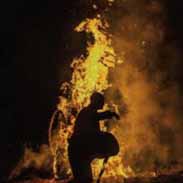Dred Scott Decision Flashcards, test questions and answers
Discover flashcards, test exam answers, and assignments to help you learn more about Dred Scott Decision and other subjects. Don’t miss the chance to use them for more effective college education. Use our database of questions and answers on Dred Scott Decision and get quick solutions for your test.
What is Dred Scott Decision?
The Dred Scott Decision of 1857 is widely considered to be one of the most significant and controversial court cases in American history. It began as a lawsuit brought by a former slave, Dred Scott, who was seeking his freedom. After two trials, the case eventually reached the Supreme Court of the United States in 1856. In an infamous 7-2 ruling that year, the court held that African Americans were not citizens under U.S. laws and could not sue in federal courts; furthermore, they declared that Congress had no authority to prohibit slavery in any U.S. territory. The ruling caused an uproar across the nation and greatly contributed to tensions between North and South leading up to the Civil War four years later.The legal arguments started when Dred Scott moved from Missouri into Illinois with his owner Dr. John Emerson; both places were free states at this time but Missouri was still a slave state so it is unknown whether Scott was free or not by law when he moved into Illinois with Emerson’s permission (Scott had previously worked for him). When Emerson died in 1843, his wife Irene took possession of Scott and brought him back to Missouri where she married another man who also kept him as a slave until 1846 when he filed suit against her for his freedom on grounds that he had been taken illegally from free soil into slave soil (Missouri) which violated state laws regarding slavery so therefore should be declared free since he did enter free soil first and since he was technically born into freedom according to those same laws at least partially due to his mother being legally freed before her death. Two separate trials resulted in conflicting rulings regarding this issue; one ruled that because he entered enslaved soil first (Missouri) then regardless of whether or not it violated any state laws, he should remain enslaved while another ruled that because she took him onto legally-freed soil (Illinois), regardless if it violated any state laws or not then indeed she broke those laws by taking him away from there thus making him legally-free once again. This confusion caused them both to appeal their cases all the way up until they reached the United States Supreme Court where Chief Justice Roger B Taney delivered its decision on March 6th of 1856.















